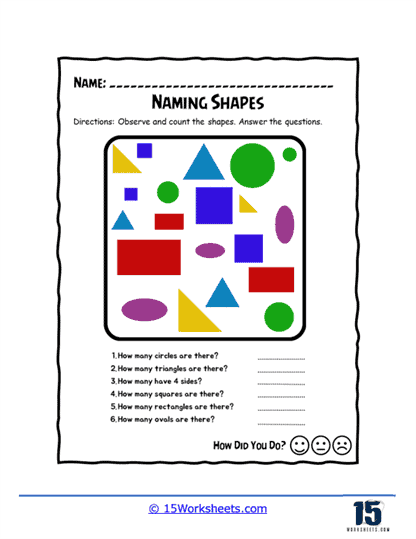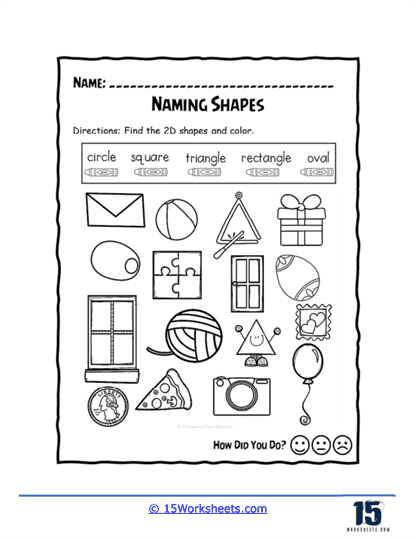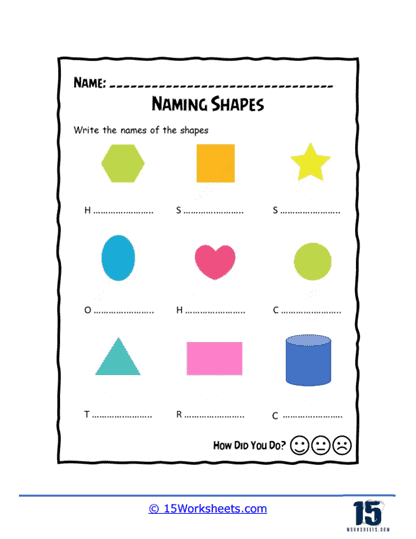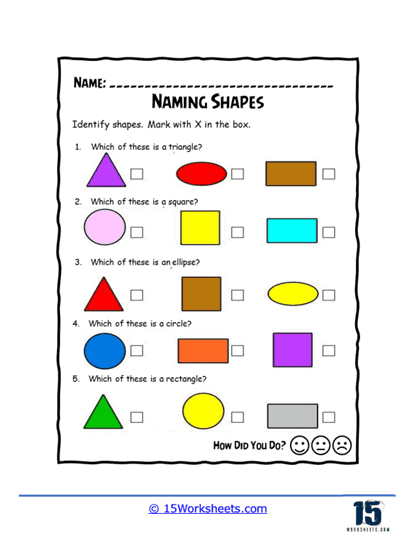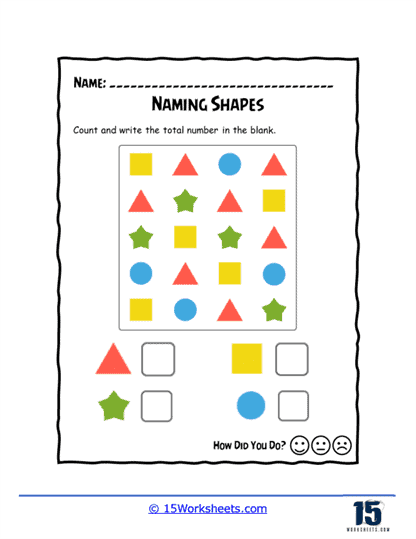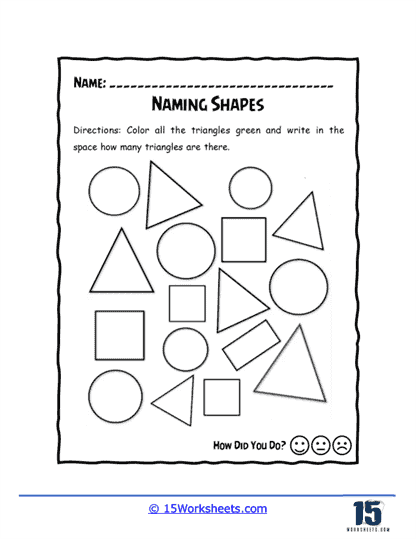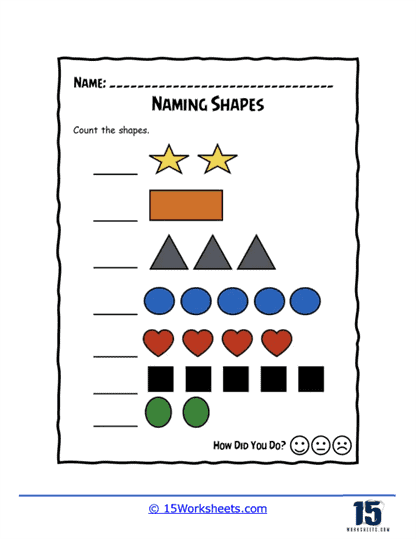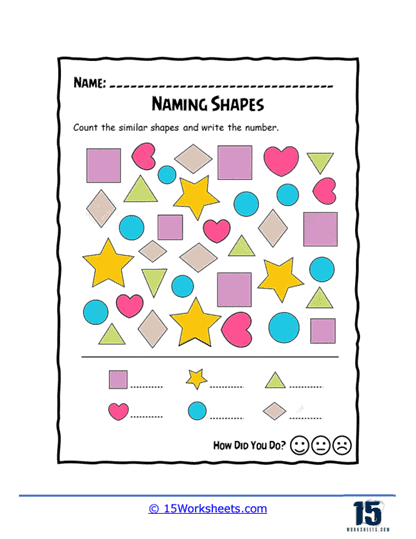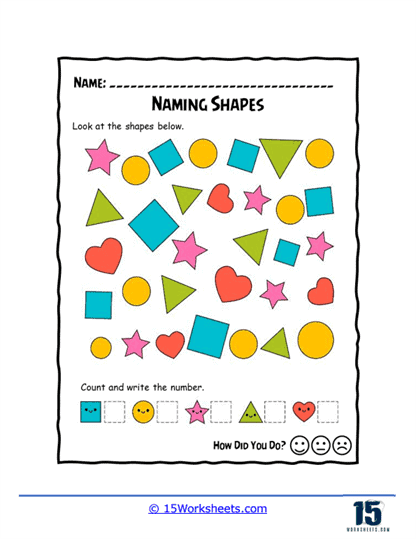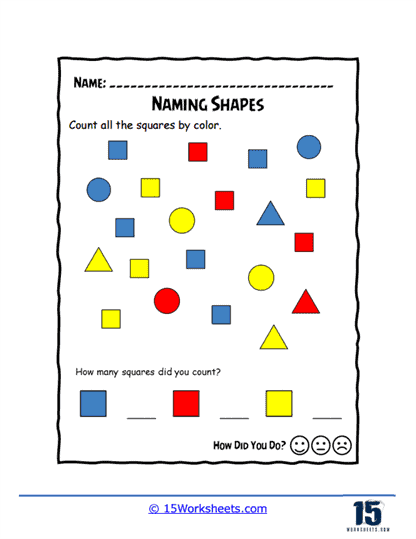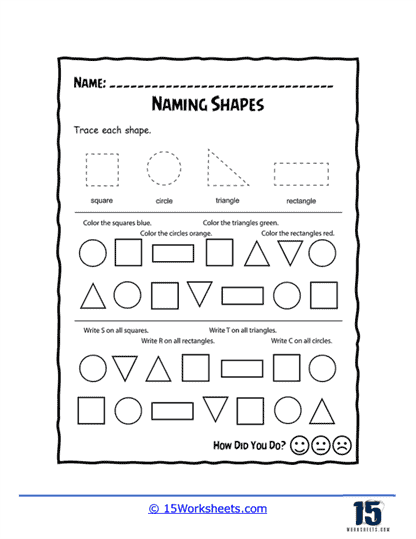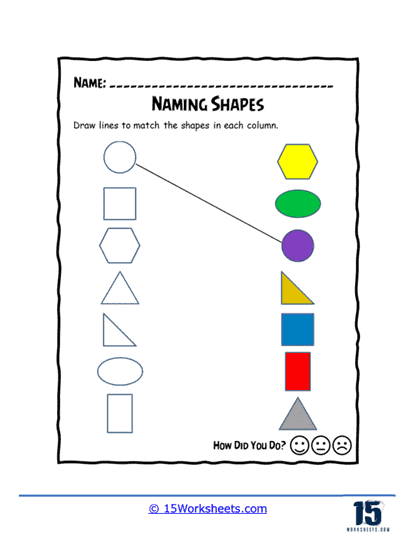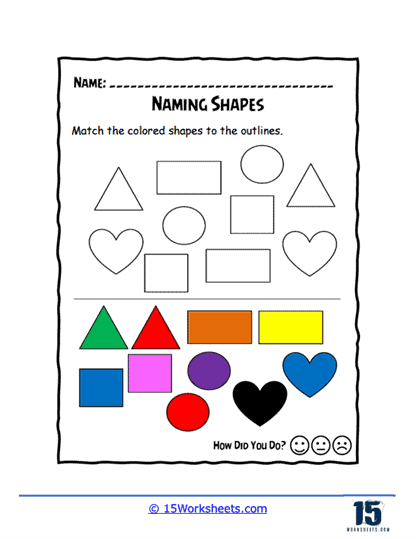Naming Shapes Worksheets
What Are Naming Shapes Worksheets?
Naming shapes worksheets are educational materials that help children learn and recognize different shapes. These worksheets typically include a variety of shapes, such as circles, squares, triangles, rectangles, and more. The objective is for children to identify and name each shape correctly.
These worksheets often feature a set of shapes placed in different cells or scattered around the page. Children are required to identify and name each shape correctly. For example, they may be asked to circle all the triangles or write the name of each shape next to it. They often go beyond simple identification and introduce shape attributes or characteristics. Children are asked to describe or identify specific attributes of the shapes, such as the number of sides, corners, or whether they are curved or straight.
By repeatedly encountering and naming different shapes, children become familiar with their characteristics and can easily identify them in various contexts. Engaging with naming shapes worksheets promotes critical thinking and problem-solving skills. Children analyze the attributes of each shape, compare them to others, and make connections, fostering their cognitive development. Working with shapes improves visual perception skills. Children learn to discriminate between different shapes, notice their similarities and differences, and develop spatial awareness.
How Can I Teach Children About Shapes?
Teaching children about shapes is an essential part of early childhood education. Understanding shapes helps children develop spatial awareness, visual perception, problem-solving skills, and mathematical concepts. Here are some effective strategies to teach children about shapes:
Introduce the Concept
Begin by introducing basic shapes such as circles, squares, triangles, and rectangles. Use real-life examples like a circular clock, square tiles, triangular sandwiches, or rectangular windows to help children recognize these shapes in their environment. Engage children in hands-on activities that involve touching, feeling, and manipulating shapes. Provide shape puzzles, blocks, or toys that allow children to explore and build with different shapes. Incorporate sensory materials like playdough, clay, or foam shapes that children can mold and arrange.
Art, Crafts, and Games
Create interactive games where children have to identify and name different shapes. You can play “I Spy” using shapes, where children have to find objects in the room that match a specific shape. Use flashcards or picture cards with different shapes and ask children to identify and sort them. Art activities provide an excellent opportunity to explore shapes. Encourage children to create artwork using various shapes. For example, they can use circles to make a sun, squares to make a house, or triangles to make a tree. Cut out shapes from colored paper and let children glue them to create collages or mosaics. Provide children with shape sorting games or activities. They can sort objects or picture cards into different shape categories. You can also create matching games where children have to match objects with their corresponding shapes.
Teach Shape Attributes
Once children are familiar with basic shapes, introduce them to the attributes or properties of each shape. For example, explain that a circle has no corners or edges, a square has four equal sides and four corners, and a triangle has three sides and three corners. Use concrete examples and visual aids to help children understand these attributes. Prompt children to identify shapes they see around them, whether at home, in the classroom, or outdoors. Encourage them to point out shapes in buildings, signs, objects, or nature. This helps children develop a connection between shapes and their surroundings, reinforcing their learning.
Relate Shapes to Real-life Objects
Help children understand the practical applications of shapes by showing them how shapes are used in everyday life. For instance, explain how a wheel is a circle, a slice of pizza is a triangle, or a book is a rectangular prism. This connection to real-life objects helps children see the relevance and utility of shapes. Take children on shape hunts or nature walks where they can search for shapes in the environment. Encourage them to find shapes in leaves, rocks, or clouds. This hands-on experience deepens their understanding of shapes and connects it to the world around them.
Remember to make learning about shapes fun and engaging. Incorporate playful activities, songs, and movement to keep children actively involved. Regularly reinforce their understanding of shapes through ongoing practice and review. By employing these strategies, children can develop a solid foundation in shape recognition, laying the groundwork for future mathematical and spatial reasoning skills.



